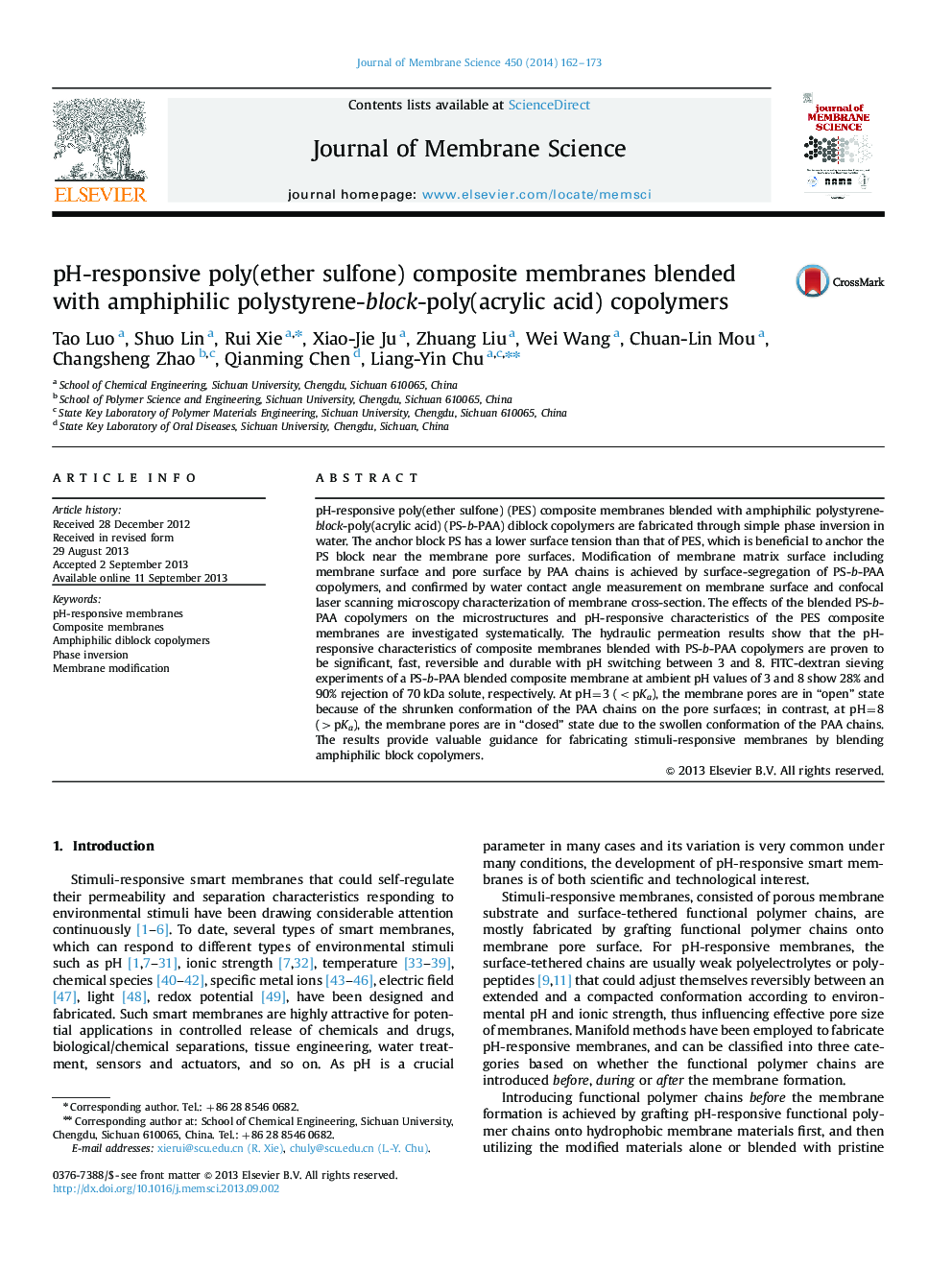| کد مقاله | کد نشریه | سال انتشار | مقاله انگلیسی | نسخه تمام متن |
|---|---|---|---|---|
| 633836 | 1456049 | 2014 | 12 صفحه PDF | دانلود رایگان |

• pH-responsive PES membranes are fabricated by blending PS-b-PAA copolymers.
• Membrane pore surfaces are modified by surface-segregation of PS-b-PAA copolymers.
• The pore channels within interior of the whole cross-section of membranes are modified.
• The trans-membrane permeability can be effectively controlled by ambient pH condition.
• The pH-responsive switching of membranes is significant, fast, reversible and durable.
pH-responsive poly(ether sulfone) (PES) composite membranes blended with amphiphilic polystyrene-block-poly(acrylic acid) (PS-b-PAA) diblock copolymers are fabricated through simple phase inversion in water. The anchor block PS has a lower surface tension than that of PES, which is beneficial to anchor the PS block near the membrane pore surfaces. Modification of membrane matrix surface including membrane surface and pore surface by PAA chains is achieved by surface-segregation of PS-b-PAA copolymers, and confirmed by water contact angle measurement on membrane surface and confocal laser scanning microscopy characterization of membrane cross-section. The effects of the blended PS-b-PAA copolymers on the microstructures and pH-responsive characteristics of the PES composite membranes are investigated systematically. The hydraulic permeation results show that the pH-responsive characteristics of composite membranes blended with PS-b-PAA copolymers are proven to be significant, fast, reversible and durable with pH switching between 3 and 8. FITC-dextran sieving experiments of a PS-b-PAA blended composite membrane at ambient pH values of 3 and 8 show 28% and 90% rejection of 70 kDa solute, respectively. At pH=3 (
Figure optionsDownload high-quality image (343 K)Download as PowerPoint slide
Journal: Journal of Membrane Science - Volume 450, 15 January 2014, Pages 162–173